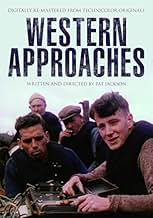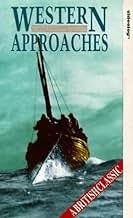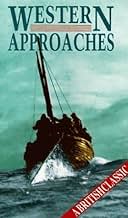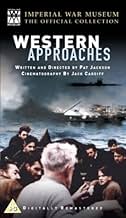Agrega una trama en tu idiomaA wartime film, made under the auspices of the Crown Film Unit, serving as a tribute to the Merchant Navy. During WWII, they kept the lifeline to America and the Commonwealth open so that th... Leer todoA wartime film, made under the auspices of the Crown Film Unit, serving as a tribute to the Merchant Navy. During WWII, they kept the lifeline to America and the Commonwealth open so that this little island could fight on. Even as late as 1943/4 when this was made, the convoys st... Leer todoA wartime film, made under the auspices of the Crown Film Unit, serving as a tribute to the Merchant Navy. During WWII, they kept the lifeline to America and the Commonwealth open so that this little island could fight on. Even as late as 1943/4 when this was made, the convoys still provided vital essential supplies as well as the materiel necessary to take the fight ... Leer todo
- Dirección
- Guionista
- Elenco
- Premios
- 1 premio ganado en total
- Convoy Naval Captain
- (as Captain Duncan MacKenzie)
- Convoy Naval Captain
- (as Captain W. Kerr)
- Gunner on Leander
- (as Chief Petty Officer Hills)
- Lifeboat Captain
- (as Captain P.J. Pyecraft)
- Dirección
- Guionista
- Todo el elenco y el equipo
- Producción, taquilla y más en IMDbPro
Opiniones destacadas
This was writer-director Pat Jackson's first feature film, yet oddly he was not able to capitalize on his sudden fame. Metro-Goldwyn-Mayer put him under contract, but kept him hanging around doing nothing (and getting paid for it) until handing him a routine "B" assignment starring Ann Sothern and Zachary Scott, Shadow on the Wall, to direct in 1950.
Returning to England, Jackson directed White Corridors and one of the Somerset Maugham stories in Encore in 1951. A disappointing Anthony Steel vehicle, intended as an "A" feature but understandably released as a "B", Something Money Can't Buy, followed in 1952. Jackson then remained idle until 1956 when he directed a routine Belinda Lee vehicle, The Feminine Touch, which even made the lovely Belinda seem dull and uninspired. A boring hero (George Baker) didn't help either; while a similarly lack-luster cast (Tony Britton, Sylvia Sims, Jack Watling) and script undermined The Birthday Present (1957). Jackson was fast earning a reputation as a routine hack, but managed to redeem himself with Virgin Island (1959) in which he had the services of a fine group of players headed by Sidney Poitier, John Cassavettes, Virgina Maskell. Although the movie achieved great notices, it failed to recoup its modest negative cost.
My guess is that at this point Jackson lost interest – and no wonder! He found work directing two "B" features, Snowball (1960) and Seven Keys (1961). His remaining six films, with the exception of What a Carve Up! which successfully attempted to cash in on the popularity of the Carry On movies – in fact many critics (including me) headlined our reviews, Carry On Carving – were likewise disappointments. In 1964 and 1968, he even directed and wrote quota quickies, Seventy Deadly Pills and On the Run, respectively, for the Children's Film Foundation. So that makes On the Run actually his last movie. King Arthur, the Young Warlord (1975) is a TV cut-down – as was To Chase a Million (1967).
P.S. I've omitted Don't Talk to Strange Men (1962) from this line-up. It was banned in 1962 and I've never seen it, although reportedly it is an effective (if very small-scale) thriller.
Indeed, it can be said that such wartime efforts were "neo-realist" before the term was even coined or the style had actually taken off in Italy! Still, it is debatable whether the end result would have been this noteworthy had professional performers been employed rather than real naval servicemen – since it tells a standard (albeit undeniably gripping) tale of a rescue at sea and the ensuing scuttling of a U-Boat!
Apart from Clifton Parker's evocative score, two novelty aspects are employed here that make the whole show all the more appealing to the casual viewer: the fact that it was shot in Technicolor (by the great Jack Cardiff, no less); the documentary pedigree itself allowed for (or, I should say, excused) the copious use of language that would otherwise not have been permissible for the era – such as "bastards", "bloody", "damn" and "hell"...not to mention sketches of naked women adorning the walls of the radio operators' quarters! For what it is worth, director Jackson would eventually break into commercial film-making but never again approached the reasonable level of excellence achieved in this case!
Photographed under arduous and hazardous conditions in choppy seas by director Pat Jackson and top Technicolor cinematographer Jack Cardiff in the days when Technicolor cameras were huge and cumbersome, it benefits from a strong narrative drive, while the occasional rough edges and amateurish acting merely underline that it was genuinely shot on a small boat at sea with bona fide merchant seamen.
It's one of those stiff-upper-lip movies, with all the facilities that the British authorities can give it. What makes it stand out from the crowd is Jack Cardiff's Technicolor camerawork: not just the portrait shots that offer noble visages under pressure, but the blues: the azure blue of the sky, the green-blue of the sea, and the steel blue of the ships' interiors.... and occasional snatches of that dark, velvety midnight blue that seems unique to British Technicolor, with the pink-faced, unblinking faces of the men looking at radios and dials and such. Cardiff's abilities with Technicolor have never been matched, and here his camera paints the scenes like Rembrandt, if Rembrandt ever worked in blue; I don't recall he ever did.
¿Sabías que…?
- TriviaLONDON, Dec. 3 (United Press) - The film division of the ministry of information expressed disappointment today that the Crown film unit production "Western Approaches" had been reported banned in the United States by the Will Hays office because of "mild profanity." A statement, pointing out that the film actually was shot at sea with merchant navy men playing all of the parts, said: "It is an integral part of the reality of the film that they should use language that would hardly be in place in the drawing room." ("British War Film Banned for Language", The San Bernardino Daily Sun, San Bernardino, California, Monday 4 December 1944, Volume 51, page 8.)
- ConexionesFeatured in Cameraman: The Life and Work of Jack Cardiff (2010)
- Bandas sonorasSeascape
(uncredited)
Composed by Clifton Parker
Selecciones populares
Detalles
- Fecha de lanzamiento
- Países de origen
- Idiomas
- También se conoce como
- Battle for the Atlantic: Greyhound vs Wolfpack - Western Approaches
- Locaciones de filmación
- Productora
- Ver más créditos de la compañía en IMDbPro
- Tiempo de ejecución1 hora 23 minutos
- Color
- Relación de aspecto
- 1.37 : 1
Contribuir a esta página



















